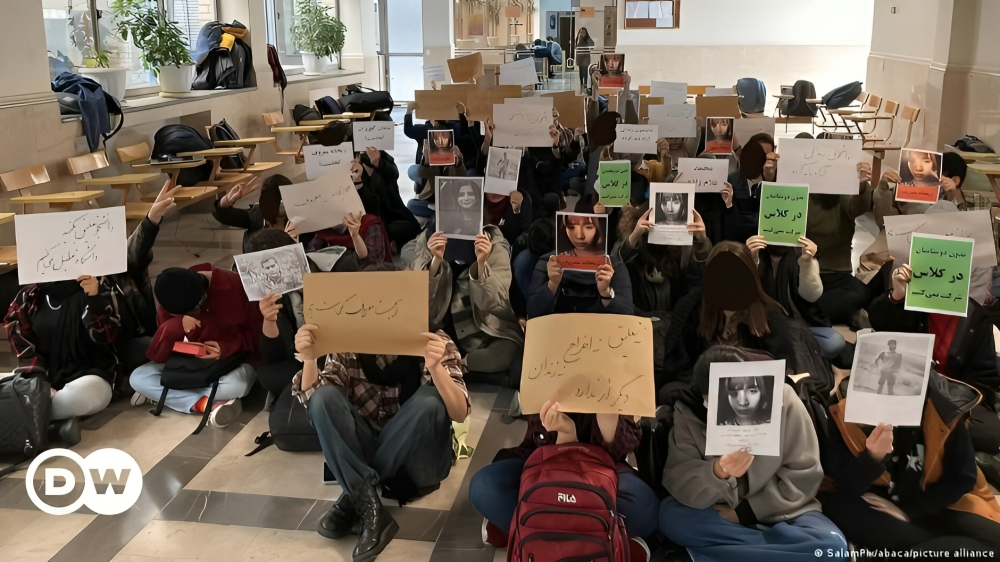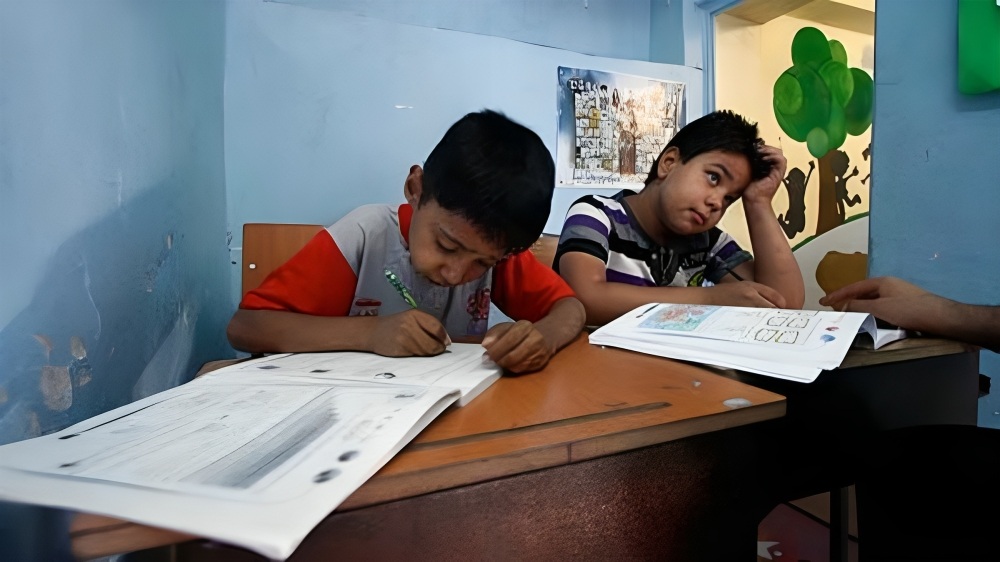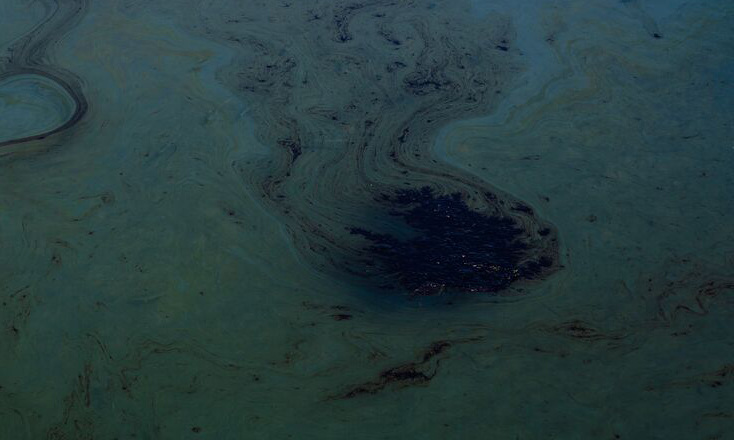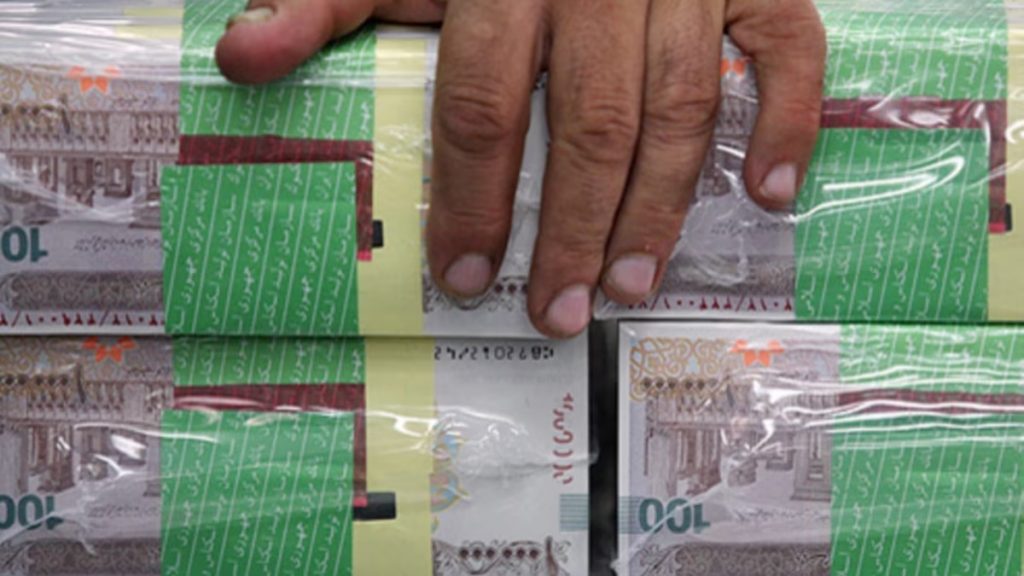
The Difference Between Absolute Poverty and Relative Poverty
The editorial of Taadol differentiates between two types of poverty and how each one must be treated differently.
There are two economic approaches with regard to providing support to the impoverished: sometimes governments intend to help those groups that are suffering from absolute poverty through providing the minimum number of calories for staying alive. This requires a certain strategy. But sometimes we are talking about the policy of redistributing wealth and lessening relative poverty, which requires different strategies.
What the Iranian government has on its agenda today to support deprived, low-income groups is to provide them with the minimum calories that they need. In other words, this decision is related to assuaging absolute poverty.
This approach is different from dealing with relative poverty and redistributing wealth in society. These types of poverty require two different strategies. Redistributing wealth requires fundamental reforms in taxation, banking and subsidy programs. Furthermore, there must be structural reforms to create economic transparency and fight corruption. These measures can, to some extent, contain the crisis of relative poverty in the economy.
Currently, Iran is dealing with fundamental issues from two perspectives: on the one hand, absolute poverty has escalated, and, on the other hand, relative poverty has increased. The Gini Index in Iran in the early 2010s was 36.5%, but this index is currently above 40%, which shows the widening class disparity in the country. To resolve this issue, the country must enact essential reforms for the redistribution of wealth. The taxation system in Iran is not designed to redistribute wealth, because there is no tax on wealth and no progressive taxes on consumption.
Moreover, subsidy programs in Iran fully benefit the rich. Semi-governmental and failing companies receive extensive subsidies from the government. Or in the country’s banking system, there is no plan for giving loans and facilities to different groups of people and small businesses. On the other hand, there is an abundance of corruption and rent-seeking in Iran’s economy.
Under these conditions, the government is after giving subsidies to low-income families so that they might at least be able to consume the minimum calories to stay alive – a decision made to control absolute poverty.
But it must be noted that in so far as inflation is not controlled, policies for containing absolute poverty, decreasing relative poverty and redistributing wealth will not be successful. In the past five years, both absolute poverty and relative poverty have escalated. If this year’s inflation rate is again above 30%, Iran’s economy would have experienced such a high inflation rate for six years.
The middle class is disappearing from Iran’s economy, with the middle class gradually falling below the absolute poverty line. The range of poverty is very extensive in Iran. In so far as inflation is not controlled, support policies will not be successful at all.
Concerns Over the Future of Medical Sciences in Iran
The editorial of Mardomsalari, penned by MP Ahmad Mazani, expresses his worries over the brain drain of physicians and medical school graduates.
When negative energy is infused into society from every side, it is difficult to talk about the real services of those educated individuals who really help people.
One of the main services of the Iranian revolution was developing and expanding medical sciences quantitively and qualitatively. It must not be forgotten that in the years leading to the victory of the revolution, medical centers were administered by Indian, Pakistani and Afghan physicians and doctors. But today many patients from different countries go to Iran for getting different kinds of medical treatment.
But nowadays there are alarming reports of the emigration of elites including physicians and medical students. Recently, the head of a hospital in Tehran predicted that surgeries that are currently performed very well in Iran will no longer be done in the country 10 years from now.
Such problems exist in all fields but the related officials try to close their eyes to these facts. But these realities will not go away by merely ignoring them. The brain drain must be acknowledged as a fact and officials must try to remove the obstacles hindering youths and experts in the country.
The majority of people, including physicians, love Iran and are ready to serve their country as they did during the Iran-Iraq War or the coronavirus pandemic. So, the ground must be prepared for them to serve their country.
Officials must provide a comprehensive report of the services and achievements in this field. They must also handle the deficiencies and obstacles that are undermining physicians.
Iran and the Risk of a Polarized Society
The editorial of Atrak addresses the danger of polarization in Iranian society, with one group blaming the government for all existing problems, and the other trying to blame all issues on other countries’ “conspiracies” and sanctions.
Iran is a society consisting of different racial and ethnic groups. In other words, Iran is a mosaic society in which different individuals and groups with different features interact with each other and their needs are intertwined.
Nonetheless, because of the deeply-rooted problems that have been created within Iran, two big opposing groups have been created which routinely confront each other. One can point to economic, livelihood, political and cultural problems which are usually faced by different social groups and have polarized society.
One group sees the economic problems as rooted in mismanagement and keeps its distance from the establishment. But the other good group sees the problems as caused by foreign conspiracies and sanctions, taking side with the establishment.
These two groups are opposing each other, disagreeing with one another’s values, with each one trying to consolidate its own social base and social-political power. Such views will result in internal conflict among people and will not only not resolve the problems within society, but will aggravate them.
When different views and values line up against each other and clash, then a deplorable situation will arise in society, creating conditions for a civil war which can be very dangerous.
Under the current circumstances, the establishment must try to close the gap in society to reach a more balanced situation. Creating balance means establishing better relations between the two groups because the gap which exists between the two groups can be very dangerous.
A polarized society cannot generate proper political conditions within a country. We must include geography in political issues because any phenomenon can be dangerous in a region like the Middle East. Corruption, inflation, poverty, unemployment and an increase in the population can change the cultural-social foundations within a society, widening the gap between different social groups.
Iranian society, like other countries in the Middle East, must revisit certain economic, social and cultural policies to overcome this crisis.
Lack of Participation Does Not Benefit Anyone
The editorial of Arman Melli highlights the danger of inexperienced, incompetent parliamentary candidates in the upcoming elections.
We all remember how well-known Iranian political figures used to invite people to go to the ballot box and partake in elections, but today such efforts are not being made. Nor are hardline “principlists” trying to foster a competitive environment.
From this perspective, it seems that the hardline “principlists” are probably after having a Parliament which is completely beholden to their agenda, which is more important for them than public participation in elections. Apparently, the next Parliament is going to be more united than the current one. Many predicted that Ali Larijani would be a candidate and many “hardline” alliances also made proposals to him. But it seems that Larijani, more than anybody else, understood the meaning of a more unanimous Parliament which led him to reject these proposals.
More than 40,000 individuals have signed up to run for the upcoming elections, which should not be considered as a positive point because it signals the end of partisan thinking in the country’s political sphere.
If there were several parties in the country, only about 1,000 individuals would have signed up for the elections, not 40,000. Kayhan daily, close to the Iranian establishment, would not then be able to brag that this number of candidates shows that people are ready to go to the ballot box.
No well-known figure has signed up to run for the elections, and since the registration was online, the candidates did not have to go to the electoral headquarters for registering in person.
The atmosphere is far from an election campaign. The “hardliners” are going to say that the “reformists” do not take part in the elections because they are unable to gain people’s votes. But the reality is that currently people’s participation is not a priority – an issue which will cause problems in the future because inexperienced, incompetent people will be in charge of the legislative branch which will have an undesirable impact on the country’s legislative process.

Mass Purge of Academics in Iran: A Cultural Coup?

Less than three weeks to the anniversary of the Woman, Life, Freedom movement in Iran, the Iranian government has targeted one of the most active scenes of protests and resistance: universities.
In addition to postponing the academic year, summoning and arresting students, the government has now resorted to sacking a significant number of professors. Only in one day, at least 10 professors from three universities in Tehran were either suspended or fired — some even not with an official notice but by a mere phone call.
Seven professors from the Literature Department at Tehran University, one member of the Bioinformatic and AI Faculty at Sharif University of Technology and two psychology professors from Allameh Tabatabei University were among those dismissed from their jobs. One thing they all had in common: supporting students in the Woman, Life, Freedom movement.
As the Students Union Councils said in a report, these suspensions and dismissals were a part of a “larger project of purging universities nationwide.”
Psychology Professor Ameneh Allie said the reason for her dismissal was signing statements and endorsing students in their sit-ins and protests, “We teachers cannot and should not be obedient and submissive to regimes.”
Ali Sharifi Zarchi, IT professor at Sharif University, who recently received his dismissal letter, had strongly criticized the crackdowns against students on social media.
Meanwhile, Iranian officials unanimously backed the repressive measure. Ali Khamenei’s representative at Kayhan daily said sacking those professors was the “least and most trivial punishment” for their support of the protests. Hossein Shariatmadari also blamed university authorities for not openly denouncing the “crimes” of these professors.
The Interior Ministry, too, called such dismissals a “revolutionary duty.” In a private letter leaked on social media, Interior Minister Ahmad Vahidi wrote to President Ebrahim Raisi that “unaligned professors were the major source of crisis” in the 2022 protests. Likewise, Raisi expressed his support for the orchestrated attack on universities, saying if a “limited number of individuals” wanted to violate order at universities, the university itself should “confront” them.
The Iranian Writers Association, however, warned in a statement that if society keeps silent about what is happening at universities today, “one of the key potential centers of protest and persistence for achieving freedom” will be silenced.
BRICS Invites Six Countries Including Iran, Saudi Arabia, UAE to Join

The BRICS group of emerging economic powers invited Iran, Saudi Arabia, Argentina, Egypt, the UAE and Ethiopia to join the bloc.
In January 2024, these countries will officially become members of BRICS.
While all members of BRICS announced their support for expanding this group, there were differences between the BRICS leaders over the new members and the speed with which these countries will join this group.
This is the first expansion of BRICS since 2010 when South Africa joined the bloc.
Indian Prime Minister Narendra Modi said about accepting new members that “I believe that the entrance of these countries will give more energy to our organization.”
Several other countries are in line to join this group.
BRICS already consists of China, Russia, India, South Africa and Brazil. The bloc’s expansion raises the issue of possible de-dollarization in which members would gradually shift to using currencies other than the US dollar for trade.
Officials in Ebrahim Raisi’s government hailed this as a great achievement, just as they did when Iran was accepted to the Shanghai Cooperation Organization (SCO).
Of course, Iran joining BRICS is all in all a positive step, but not to the extent declared by the Raisi government. The BRICS group offers advantages and benefits for its members like having access to a cheap workforce, various resources and reserves, easier access to financial resources and lower costs. But, at the same time, there are obvious shortcomings in the field of modern and advanced technologies compared to the West.
In 2022 at the BRICS summit in Beijing, President Raisi announced Iran’s interest in joining this bloc. It seems that this request has been accepted under China’s mediation.
Iran joining BRICS can increase the access of this group to the energy market and its access to transit routes, but like the SCO, Iran’s tough situation with regard to global relations will not allow it to take much advantage of the new opportunities provided by this bloc.
Roughly “9 Million Absolute Illiterates” in Iran

The former education minister in Ebrahim Raisi’s government said that there are almost 9 million absolute illiterates in Iran, adding that currently the number of children fully left out of education has reached 160,000, with 970,000 school dropouts in all three educational levels.
The existence of 9 million absolute illiterates means more than 10% of the Iranian population are absolutely illiterate, indicating the high level of illiteracy in the country.
Former Education Minister Yusuf Nouri announced on Iran’s state-run television that according to the census in 2016 and the statistics of the Statistical Center of Iran, “we have 8,795,000 illiterates in Iran.”
Nouri added that this number is based on the self-proclamation of individuals over the age of six who cannot even read and write; “my estimate is that we have about the same number of absolute illiterates this year too.”
Prior to this, the Parliament’s Research Center had announced in a report in 2019 that the number of absolute illiterates reaches nearly 9 million people; in the same year, however, the World Bank and UNESCO announced that the number of absolute illiterates was higher than the number announced by the Parliament’s Research Center.
The Literacy Movement Organization of Iran was established in 1979 by the order of Ayatollah Khomeini, the founder of the Iranian republic, to teach reading and writing to adults with no access to education.
Mohsen Ghara’ati, a cleric close to the former and current supreme leader of Iran, was the official representative of this organization until 2010. But now some Iranian officials acknowledge the failure of this organization after 44 years and are seeking to dismantle it.
Oil Pollution in the Gulf

The head of the Environmental Department in Bushehr Province confirmed the presence of oil pollution in the Gulf from Kharg Island to Bandar Genaveh, stating that the operation for containing and clearing the oil spill has started with the deployment of two vessels.
Abdulrahman Moradzadeh pointed to the fact that the oil spill in Bandar Genaveh is related to oil transportation from Bandar Genaveh to the oil terminal on Kharg Island, adding that teams of divers have been deployed to the region.
This major oil spill is approaching Bandar Genaveh. Old pipes used to transport oil from Bandar Genaveh to Kharg Island are reportedly the cause of the leak. The people of Bandar Genaveh have been asked to avoid swimming in the Gulf waters.
Hour by hour the oil spill around Bandar Genaveh grows bigger, with the oil surrounding the coast and destroying everything it touches.
Reportedly, a passenger vessel first saw the oil spill on Saturday, August 26, and reported it to the Port and Maritime Organization, which then sent its experts to the Gulf to clear the oil. But so far all efforts have been to no avail.
Bandar Genaveh’s Environment Department reportedly sent a letter to Iran’s National Oil Company a few months ago asking them to think of a solution to prevent such environmentally devastating incidents.
The pipelines for transporting oil from Bandar Genaveh to Kharg Island are buried under the mud and slime, and so far, the exact location of the oil leakage has not been identified.
The oil spill, which is only two miles away from the coast, threatens sea creatures and the coast. Moreover, areas for swimming have become polluted, and the Environment Department has advised people to stay away from the sea.
Tehran Prosecutor Announces the Discovery of Embezzlement Amounting to 3,000 Billion Tomans in Government Bank

Tehran’s official prosecutor announced the discovery of an embezzlement worth 3,000 billion tomans in a government bank in Tehran.
Ali Salehi also said that the main suspect was arrested by the Intelligence Ministry before attempting to leave the country.
Without mentioning the name of the bank or the main suspect, Tehran’s prosecutor said that the suspect attempted to leave the country illegally from the Western border and go to a European country.
It must be noted that the Iranian republic is one of the most corrupt countries in region. According to Transparency International’s annual report, Iran ranks 147 among 180 countries with regard to widespread financial corruption.
In the past decade, discoveries of embezzlement by bank managers have only increased and each consecutive report exposes a new embezzlement by yet another banking figure.
In one of the most notorious cases of embezzlement in Iran, Mahmoud Reza Khavari, former CEO of Melli Bank, escaped to Canada after embezzling 3,000 billion tomans in 2011. The Iranian republic has not been able to take him to court.
